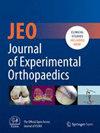Anterior knee pain is a relevant cause for dissatisfaction after total knee arthroplasty without patellar resurfacing
Abstract
Purpose
The aim of the present study was to investigate the incidence of anterior knee pain (AKP) after total knee arthroplasty (TKA) without patellar resurfacing and to determine how patient-reported outcome measures (PROMs) differ in patients with and without AKP.
Methods
All primary TKAs from the local registry operated on between 2010 and 2016 were reviewed for secondary patellar resurfacing and asked about the presence of AKP (yes/no), satisfaction with the outcome of the TKA (Visual Analogue Scale [VAS] 1–10) and completion of the Oxford Knee Score (OKS) and Anterior Knee Pain Scale (AKPS). A total of 1371 primary TKAs were included, of which 201 patients had died, and 972 (70.9%) completed the additional questionnaires after a mean follow-up of 9.9 years.
Results
AKP was reported by 157 patients (16.2%), and eight patients (0.6%) had undergone secondary patellar resurfacing within two to five years after primary TKA, two of them with an additional increase of the insert due to instability. Patients who reported AKP had significantly worse OKS (mean 24.0 vs. 39.6), AKPS (mean 50.8 vs. 79.1) and satisfaction (mean 4.8 vs. 8.4/10). There were no statistically significant differences in the incidence of AKP by sex (men 15.1% vs. women 16.4%), age at surgery (<60 years 19.6% vs. ≥60 years 15.2%), comorbidities (ASA 1/2 14.5% vs. ASA 3/4 18.1%) and constraint (unconstrained 15.9% vs. rotating-hinge 26.3%). The incidence of AKP in unconstrained TKA was 16.0% in CR, 12.6% in UC and 18.5% in PS implants. AKP occured significantly more frequently in patients with a BMI > 40 kg/m2 (26.0%, p = 0.03). In a multivariate regression analysis, only preoperative OKS had an independent influence on AKP (OR 0.949 per point, p = 0.003).
Conclusion
In this study with long-term follow-up, a relevant proportion of patients reported AKP, which had a negative impact on PROMs and satisfaction. However, the rate of secondary patellar resurfacing was very low.
Level of Evidence
Level III, therapeutic study.




 求助内容:
求助内容: 应助结果提醒方式:
应助结果提醒方式:


